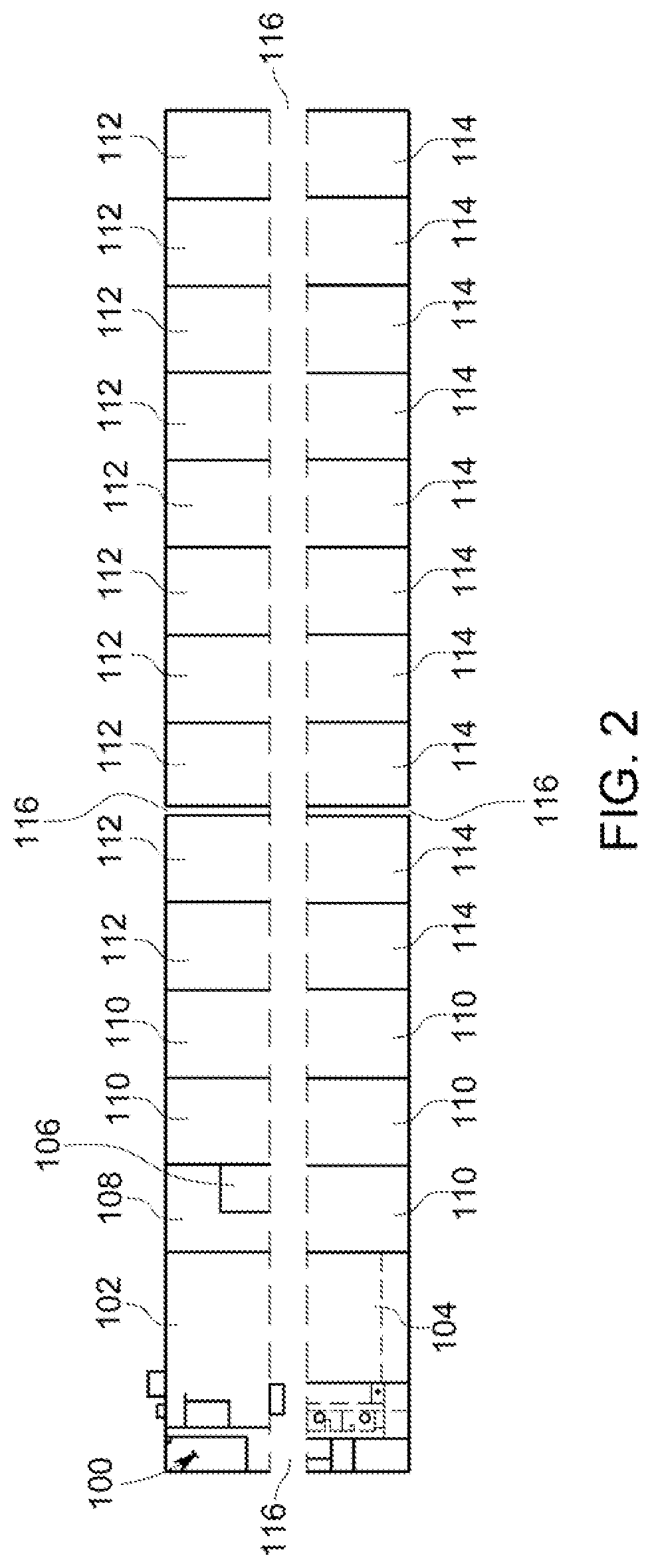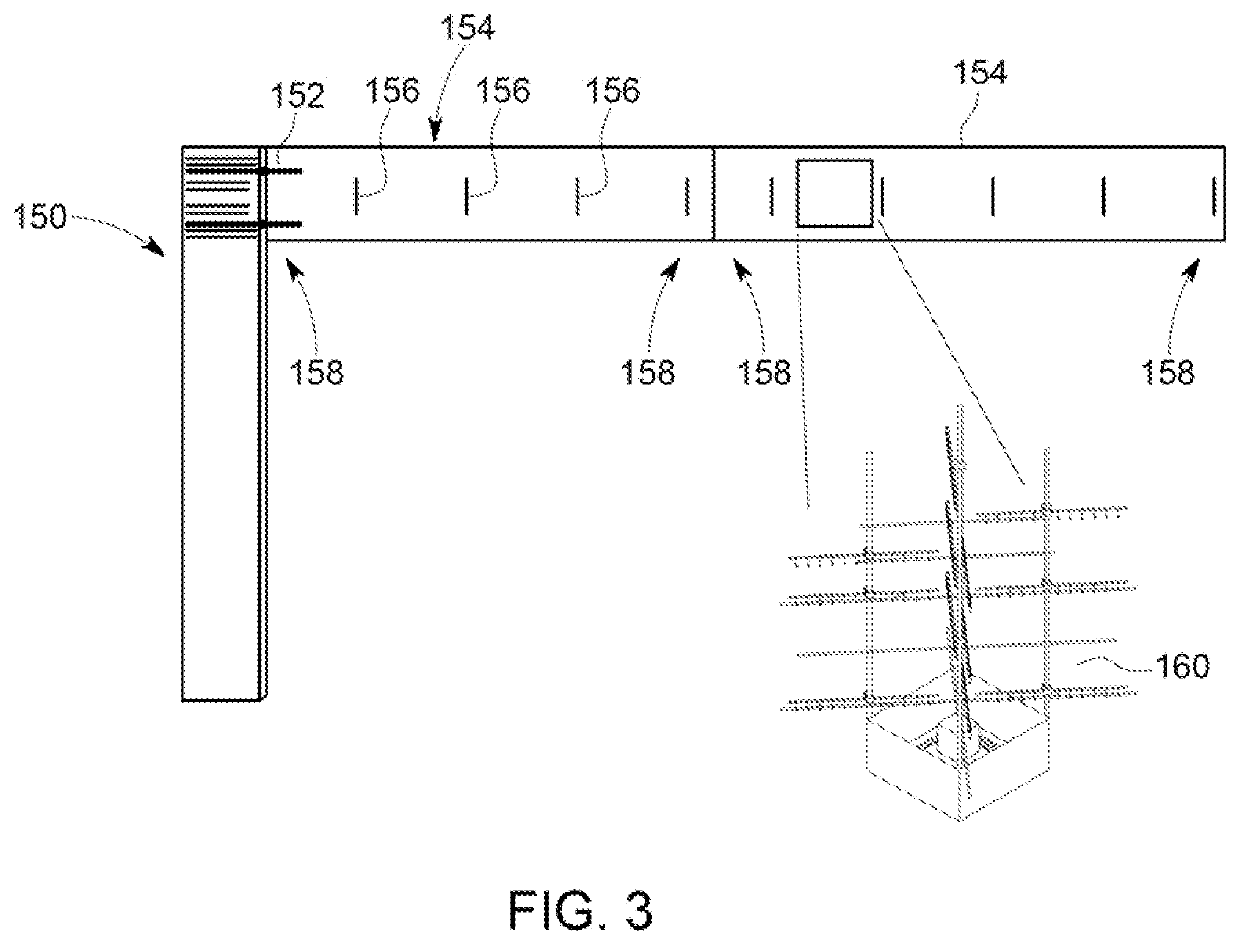Tray and Trellis System for an Automated Farm with Robots Working on Plants
a technology of robots and trellis, which is applied in the field of trellis system for automated farms with robots working on plants, can solve the problems of difficult cloning, trimming, maintaining, and difficult cloning of cannabis or hemp plants, and achieves the effects of easy assembly and disassembly, and easy repair
- Summary
- Abstract
- Description
- Claims
- Application Information
AI Technical Summary
Benefits of technology
Problems solved by technology
Method used
Image
Examples
Embodiment Construction
[0088]Referring now to FIG. 1, a sectional end view of an embodiment of an Automated Farm with Robots Working on Plants is shown. The farm building is a building with environmentally controlled grow rooms. A single slope roof 10 uses the attic to collect and treat the air that comes out of the grow rooms 46 and 48. Grow room 46 is a flower room with lights 46, and grow room 48 is a flower room without lights 48. In both grow rooms 46 and 48, split HVAC systems 36 have outdoor condensers and indoor heat pumps. Large ceiling fans 40 circulate air throughout the grow rooms 46 and 48, as well as replicate wind which strengthens the plants. Humidifiers and / or dehumidifiers 42 keep the humidity in range if it becomes too low or too high. Room air filters 44 perform a final filtration of the air that gets pulled into the grow rooms 46 and 48 from a preconditioned air hallway 50. The preconditioned air hallway 50 has four air intakes (not shown) from the outside. The four intakes are equipp...
PUM
 Login to View More
Login to View More Abstract
Description
Claims
Application Information
 Login to View More
Login to View More - R&D
- Intellectual Property
- Life Sciences
- Materials
- Tech Scout
- Unparalleled Data Quality
- Higher Quality Content
- 60% Fewer Hallucinations
Browse by: Latest US Patents, China's latest patents, Technical Efficacy Thesaurus, Application Domain, Technology Topic, Popular Technical Reports.
© 2025 PatSnap. All rights reserved.Legal|Privacy policy|Modern Slavery Act Transparency Statement|Sitemap|About US| Contact US: help@patsnap.com



